Determine the Correct Frame Size for Your Road Bike
Whether you’re a newbie or a seasoned veteran, everybody wants to be comfortable and painfree on his/her bike. But how do you make sure you have the right road bike frame size? There are as many advices as there are people, so how to measure, and what do these measurements mean? Our colleague Youri explains what to keep in mind when you’re buying a new bike and how to determine the right size.
The frame size is determined by means of the seat tube. It is the distance measured between the middle of the bottom bracket and the middle of the top tube, parallel to the seat tube.
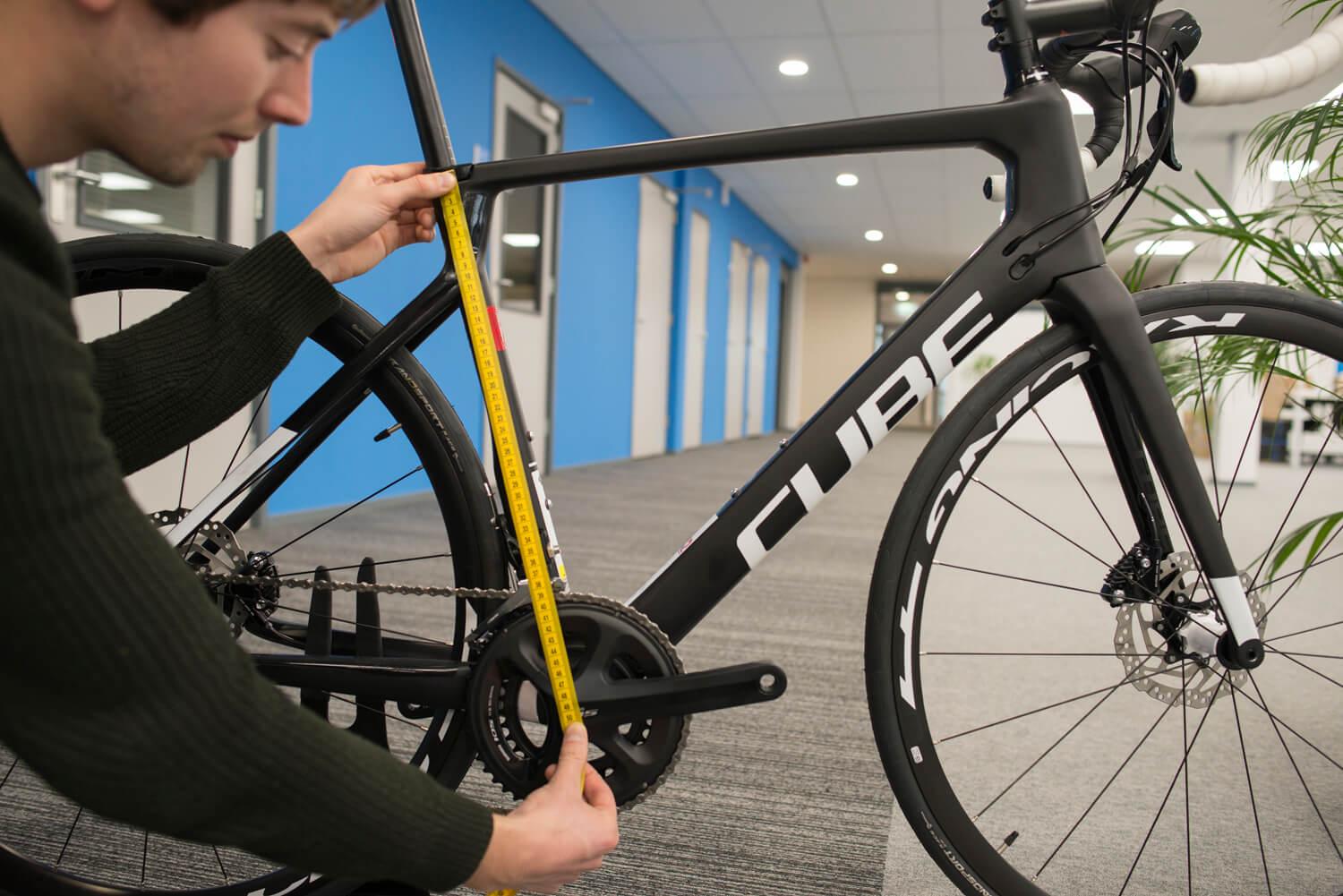
This is often the first thing that is looked at when people purchase a new bike, and for a reason of course. Based on the frame size you can estimate if a bike suits your length more or less.
The “old” way
This, however, is the “old” approach to determine frame size. There are many more aspects and measurements that are important to determine which one will fit the best. You’ll first have to measure yourself, because everybody is different, so which size is the best depends on more than your length.
If you’re tall, but you have relatively short legs, then a more compact frame will often be better. Then you can increase the distance to your handlebars with a longer stem. If you’re short(er), but your legs are relatively long, then perhaps try a larger frame.
These are only a few examples of the measurements to keep in mind while deciding on the right frame size for you. So measure yourself, and then adjust the bike. This way your bike will fit you the best and the rides will be much more comfortable.
Top tube
The top tube is the (more or less) horizontal tube between the seat tube and the headset. Measure the distance between the middle of the seat tube to the middle of the headset. A sloping frame has a more diagonal seat tube, rather than horizontal.
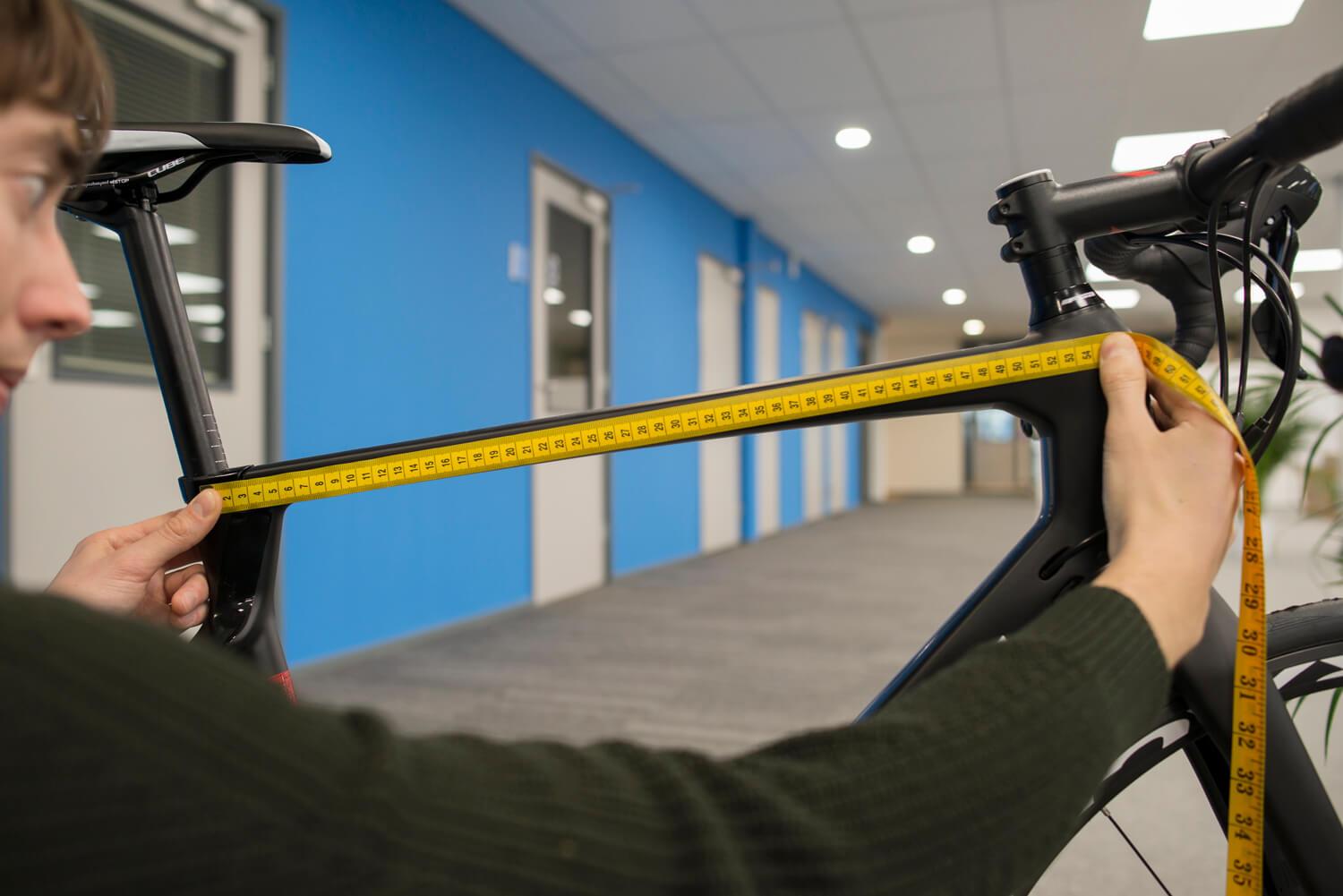
You do need to measure the horizontal line, between the headset and the seat tube, to determine the length of the top tube. When you measure the diagonal top tube, you’ll get the wrong measurement.
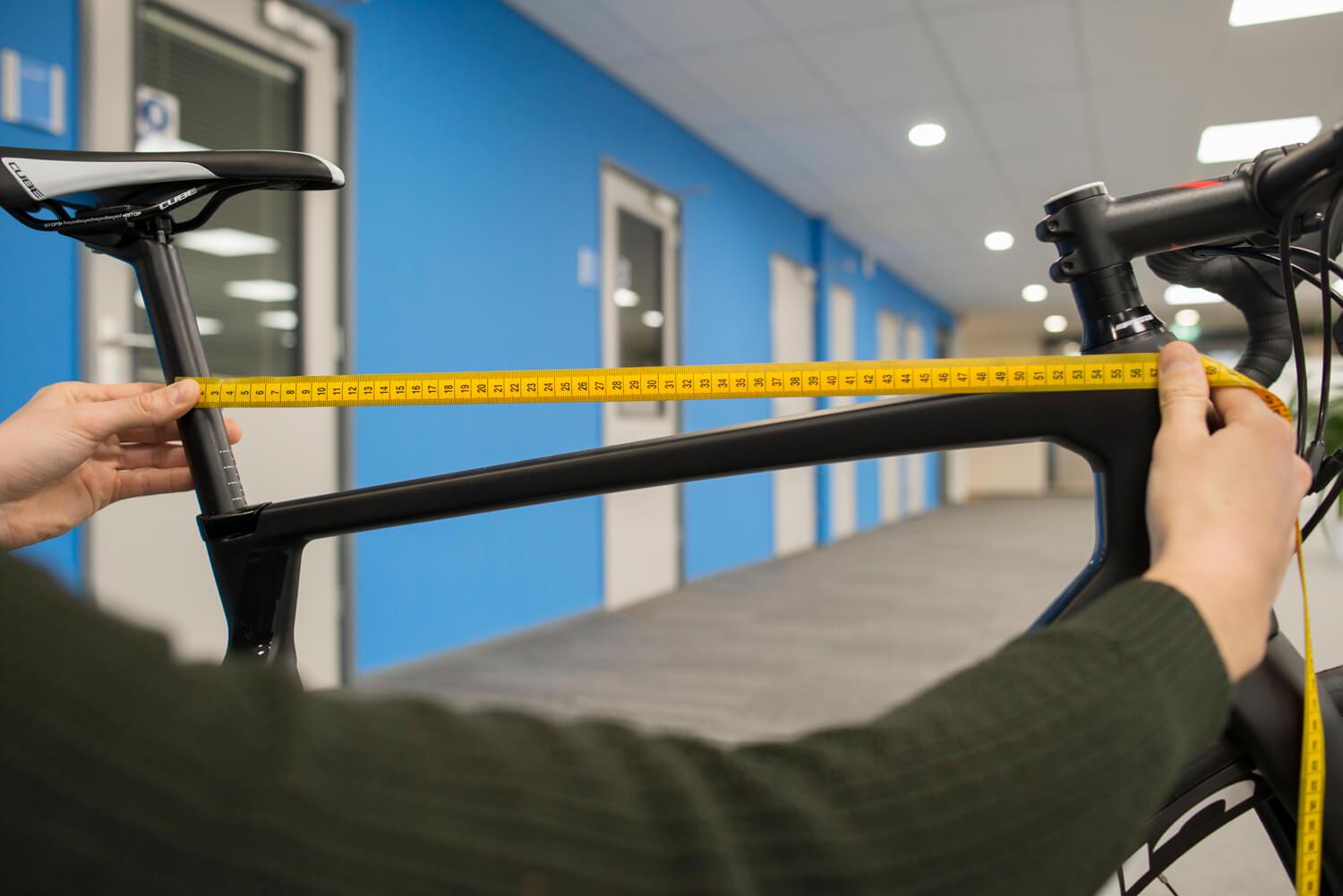
Head tube
The distance between the top and the bottom of the headset. If you want to have a more comfortable geometry, choose a frame with a longer head tube.
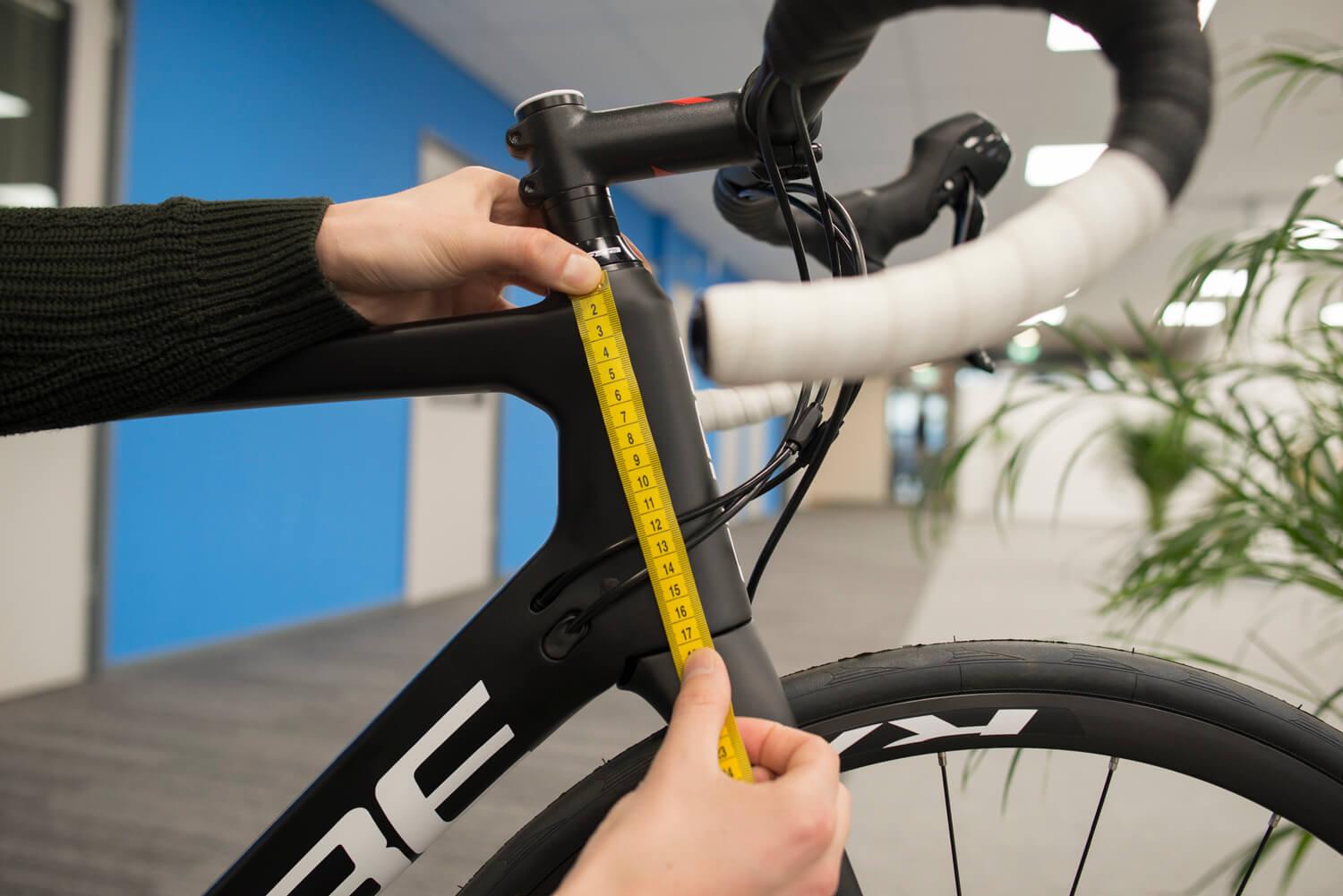
In the past, larger frames also had a longer head tube. This because it used to be the only length that could vary.
The UCI had a rule that the distance between the axles of the front and rear wheels had to be exactly 1 meter, regardless of the length of the rider.
Reach
The reach is the horizontal width between the bottom bracket and the headset. A longer reach increases the distance to the handlebars, so a deeper position.
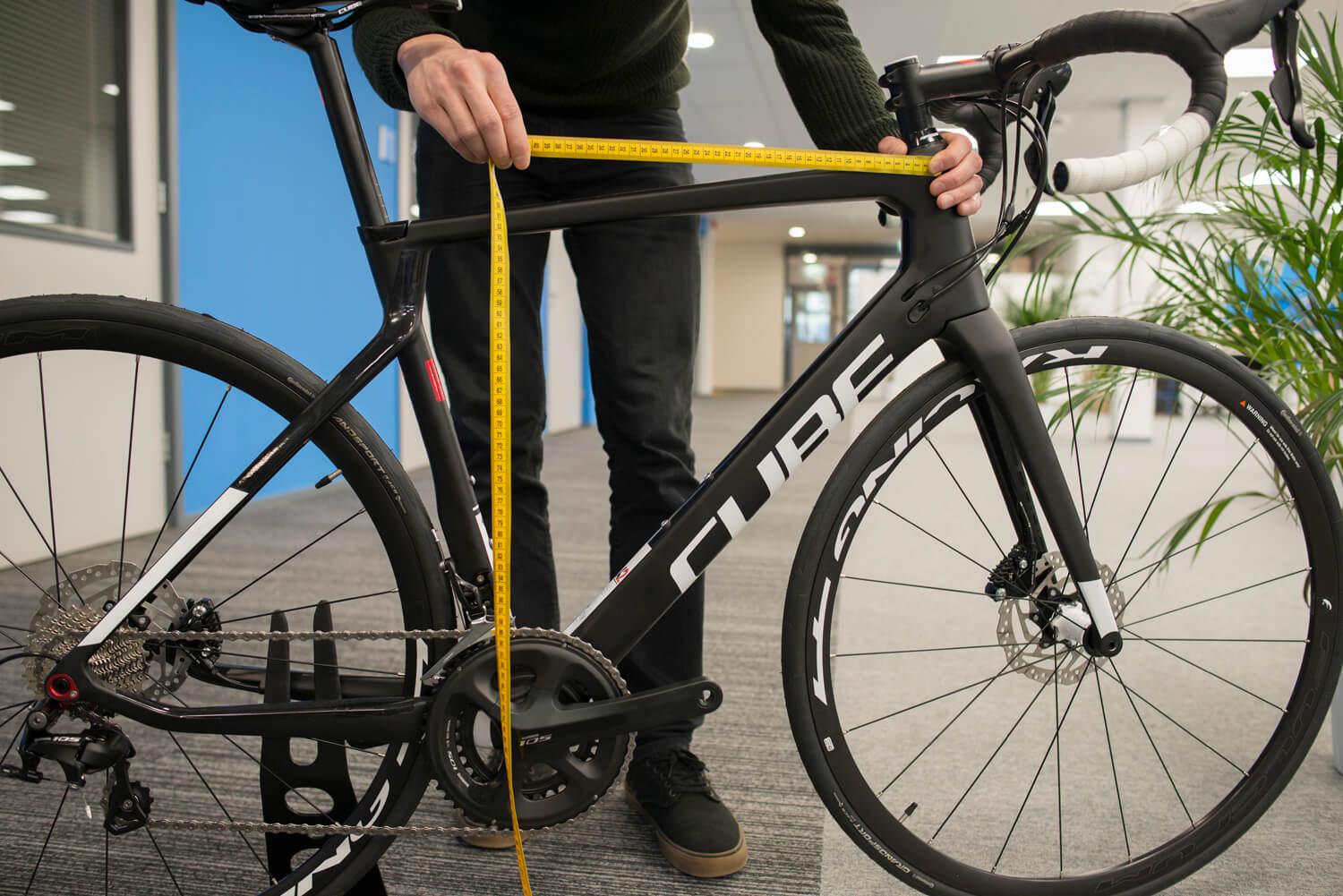
Bikes for climbing and aero frames often have a longer reach. Because the bottom bracket and the headset are not on the same height, draw an imaginary vertical line from the bottom bracket to the same height as the headset.
Measure from there. You can image that it’s hard to do on your own, so luckily manufacturers often have measured it for you.
Stack
The stack is the vertical distance between the bottom bracket and the headset. It’s the imaginary line that you needed to measure the reach.
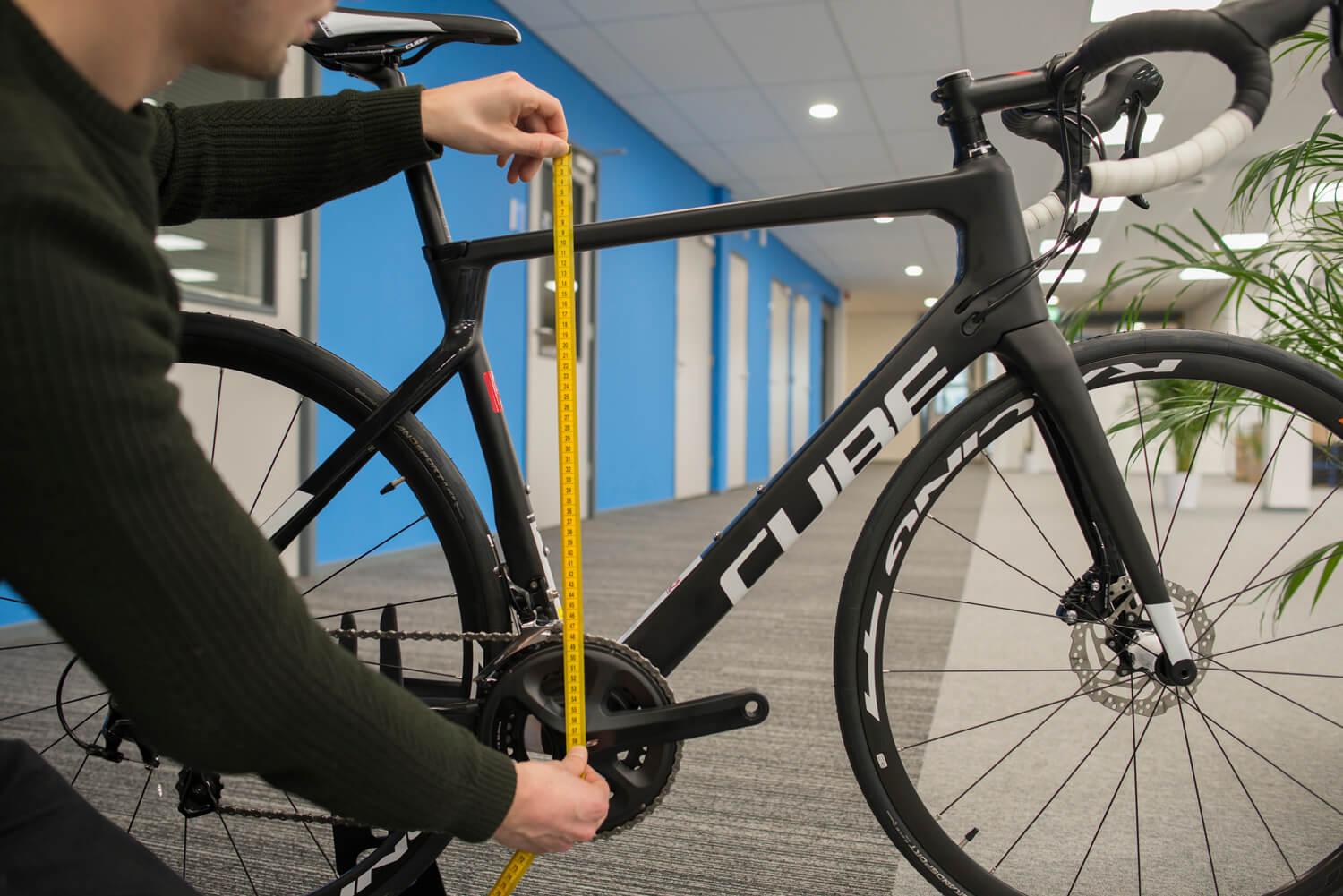
A shorter distance between the bottom bracket and the headset (stack) means a deeper position. This is often the case with aerodynamic bikes.
A more comfortable position is achieved when the distance between them is larger, a Trek Domane or Giant Defy have a larger stack than other models for example.
Standover-height
The distance between the ground and the top tube. If you have a sloping frame, measure at the middle of the top tube.
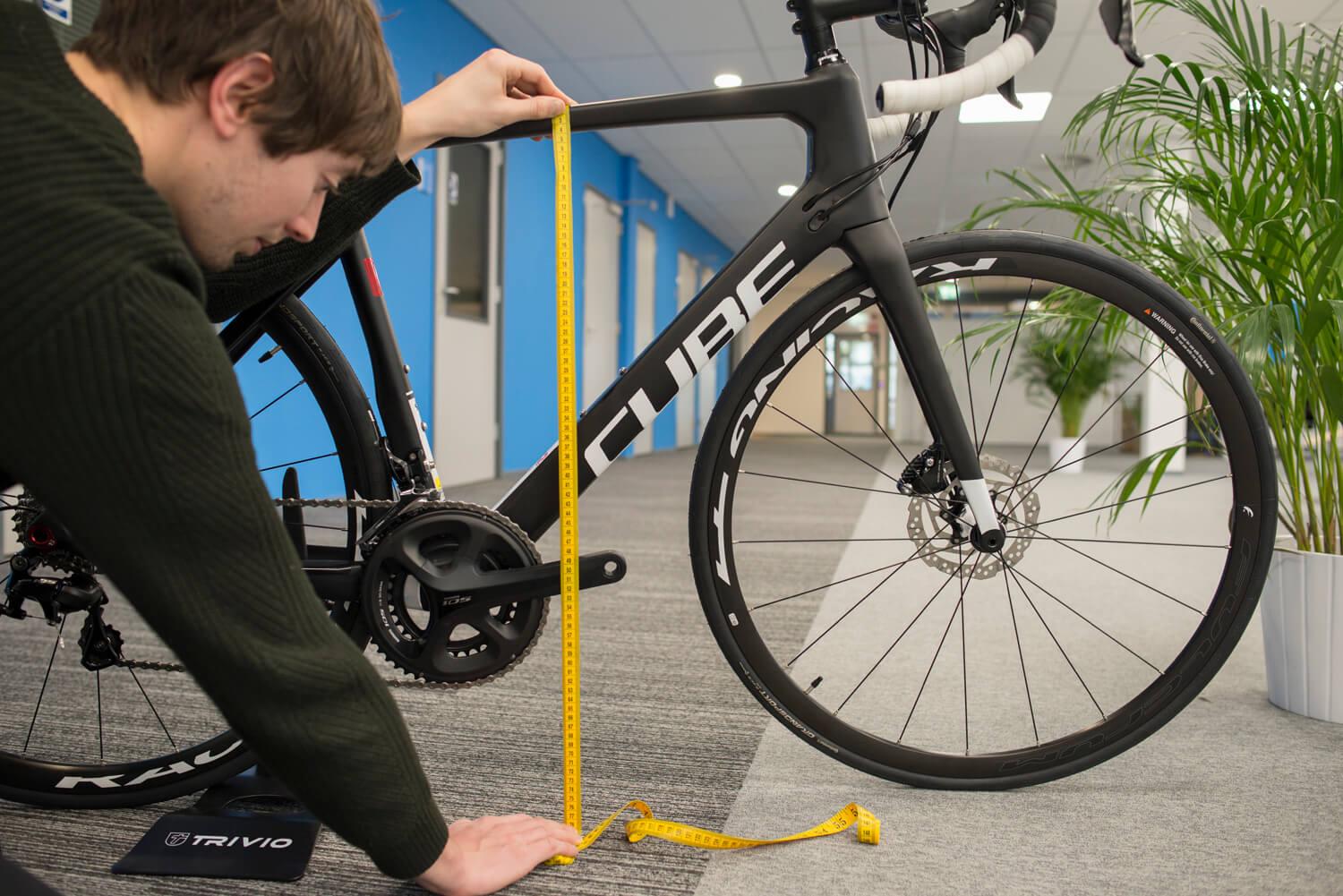
What is the point of measuring this one? Imagine that you want to get off your bike, but the standover height is too high, could be dangerous!
What to do now?
The sizes influence your riding position. The frame size is measured by means of the seat tube. This does not decide if the frame size is right, however.
Stack and reach are just as important, as they also determine your riding position. The higher the stack, the lower your handlebars compared to your saddle. You can use spacers to correct this, though.
The bigger the reach, the larger the distance between saddle and handlebar, and a deeper position. However, sometimes this is not the case.
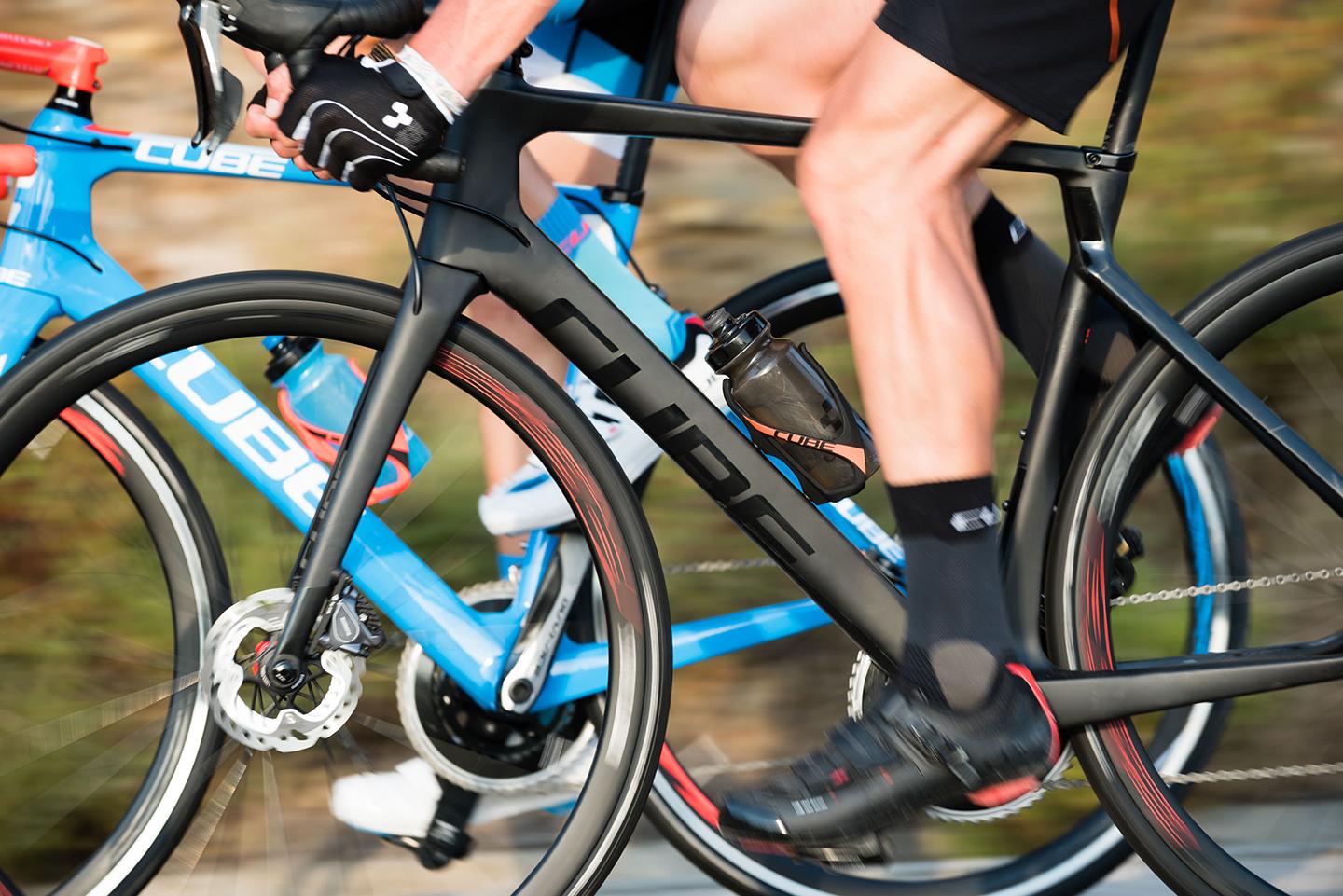
Two bikes with the same reach can have a different distance between saddle and handlebar. The angle of the seat tube also influences the reach. The smaller the angle, the larger the distance is going to be.
These sizes don’t say a lot, so it seems. Just like with the frame size, it doesn’t offer a definitive frame size.
Also look at your body
Also take a look at your own body. How long are your legs? Is your torso short, or long? Are you flexible?
Especially the latter can be important when purchasing a new bike. Generally, the more flexible you are, the deeper your position, without being uncomfortable.
Somebody who can’t reach his toes when bending over with straight legs, will do better with a frame that has a larger stack, as it results in a more upright position.
To achieve the perfect position, you can also adjust some components of the bike, such as the seat post, the handlebars, and the crank length.
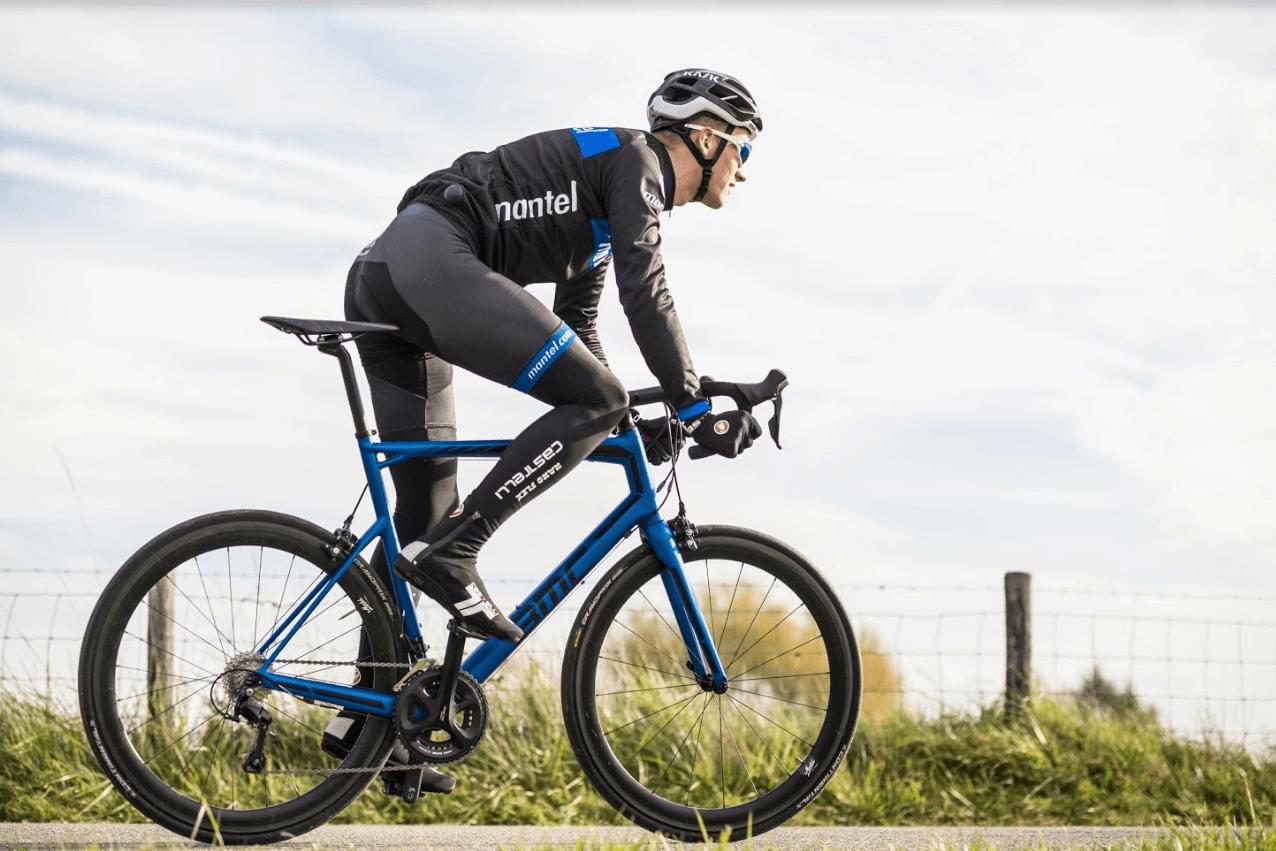
Adjusting your bike to perfection is something you might want to leave to a professional.
At our Mantel store we offer bike fittings, with software by Shimano.
Olle Vastbinder
You can find me on a bicycle almost every day. I commute each day from my house to work and back. Often on my road bike, and during the winter on an old crosser. And if that isn't enough, you can find me on my bike during most weekends too. On my trusty road bike or my mountainbike. And if you can't find me outdoors riding my bike, odds are I might be riding on Zwift
Related posts

How To Plan a Route Using Komoot? [How-To]
27 March 2023Planning and finding your own cycle routes sounds more complicated than it actually is ...

Do your own bike maintenance work! [Do It Yourself Tips]
7 February 2023Buying a new road, mountain or gravel bike is one thing. Maintaining your bike properly is another ...
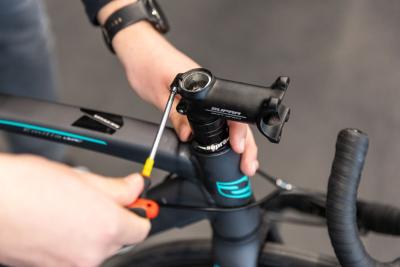
Replace the stem of your road bike in 11 steps [Bike Techcenter]
26 April 2022For road cyclists, being comfortable on your bike is of the utmost importance ...
 Nederland
Nederland België
België Deutschland
Deutschland United Kingdom
United Kingdom Finland
Finland Ireland
Ireland Luxembourg
Luxembourg Portugal
Portugal Poland
Poland Österreich
Österreich France
France España
España Italia
Italia Sverige
Sverige Danmark
Danmark









































































































































































































































